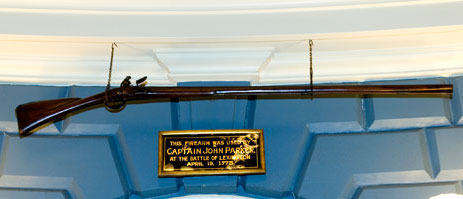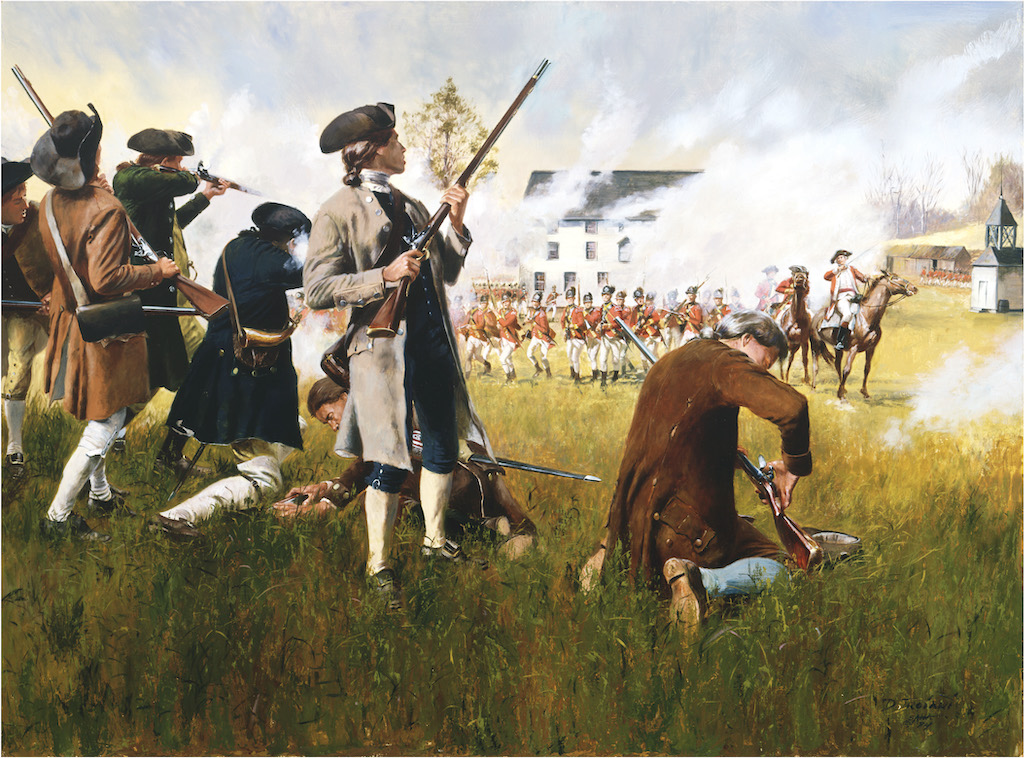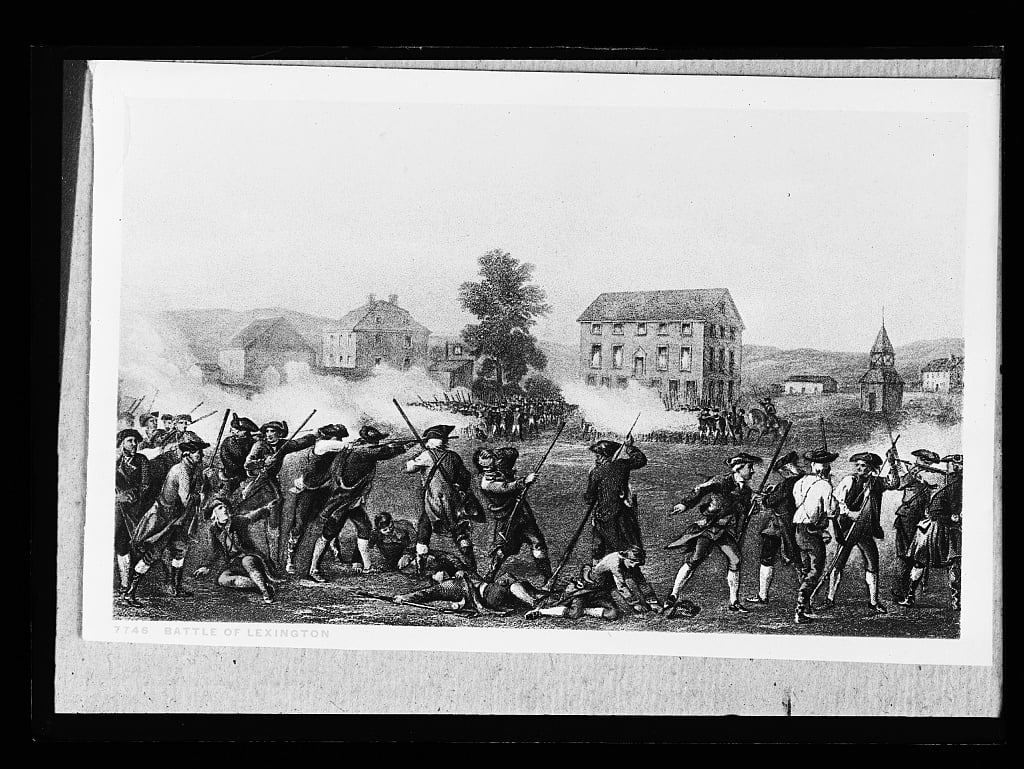Capt. John Parker, a veteran of the French and Indian War, posted his company here in two lines on the morning of 19 April, stretching out into the green but not blocking the road to Concord.
As the British light infantry advanced, Parker ordered his men to disperse. Someone fired a shot.
To this day, no one knows who fired the shot but at its report, the light infantry immediately opened fire at the dispersing militia. Pitcairn and the other British officers were unable to restore order until Lt. Col. Smith arrived and ordered a drummer to beat the signal for cease-fire. It took half an hour to restore order and get the column back on the road to Concord.
". . . and upon their sudden Approach, I immediately ordered our Militia to disperse and not to fire. Immediately said Troops made their appearance and rushed furiously, fired upon and killed eight of our party, without receiving any provocation therefor from us."
Capt. John Parker, testimony of 25 April 1775
Sources
Deposition of Captain John Parker Concerning the Battle at Lexington, 04/25/1775; Massachusetts State Papers, 1775 – 1787; Papers of the Continental Congress, 1774 – 1789; Record Group 360: Records of the Continental and Confederation Congresses and the Constitutional Convention, 1765 – 1821; National Archives. Archives Identifier: 595246.



